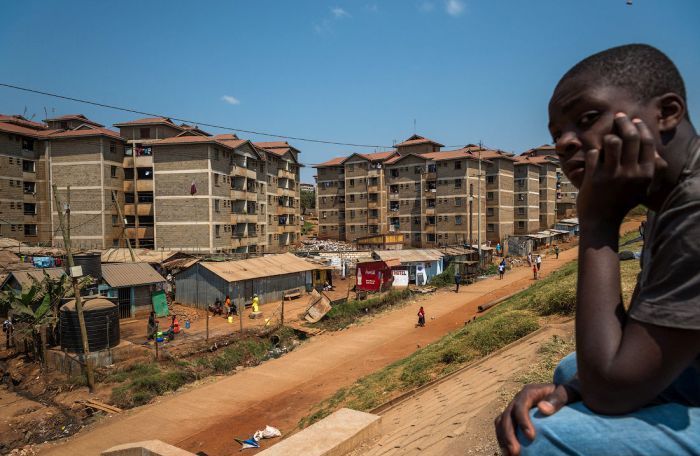|
|
Kibera Urban Slum, Nairobi, Kenya
|
Nairobi, where Kibera is located, is a city that was founded in 1899 when Uganda Railway line was built, thereby creating a need for its headquarters and British colonial offices. The colonial administration intended to keep Nairobi a home for Europeans and temporary migrant workers from Africa and Asia. The migrant workers were brought into Nairobi on short-term contracts, as indentured labor, to work in the service sector, as railway manual labor and to fill lower-level administrative posts in the colonial government. Between 1900 and 1940, the colonial government passed a number of laws – such as the 1922 Vagrancy Act – to segregate people, evict, arrest, expel and limit the movement of the natives and indentured workers. Within Nairobi, Africans could live in segregated "native reserves" at the edge of the city. Permits to live in Nairobi were necessary, and these permits separated living areas of non-Europeans by ethnic group. One such group with official colonial era permits, were soldiers who served the African interests of British colonial army, and the assigned area for them developed into a slum, now known as Kibera.
Kibera originated as a settlement in the forests at the outskirts of Nairobi, when Nubian soldiers returning from service with the King's African Rifles (KAR) were allocated plots there in return for their efforts in 1904. Kibera was situated on the KAR military exercise grounds in close proximity to the KAR headquarters along Thika Road. The British colonial government allowed the settlement to grow informally. Furthermore, the Nubians had no claim on land in "Native Reserves". Over time, other tribes moved into the area to rent land from the Nubian landlords. With increase in railway traffic, Nairobi's economy developed, more rural African migrants moved to urban Nairobi in search of wage labor. Kibera and other slums developed throughout Nairobi.
Proposals were made in the late 1920s to demolish and relocate Kibera, as it was within the zone of European residential holdings; however, the residents objected to these proposals. The colonial government considered proposals to reorganize Kibera, and the Kenya Land Commission heard a number of cases which referred to the "Kibera problem". By then, Kibera was not the only slum. A 1931 Colonial Report noted the segregated nature of housing in Nairobi and other Kenyan towns, with housing for Europeans reported as good, and widespread prevalence of slum property for Africans and other non-European migrants.
|
|









